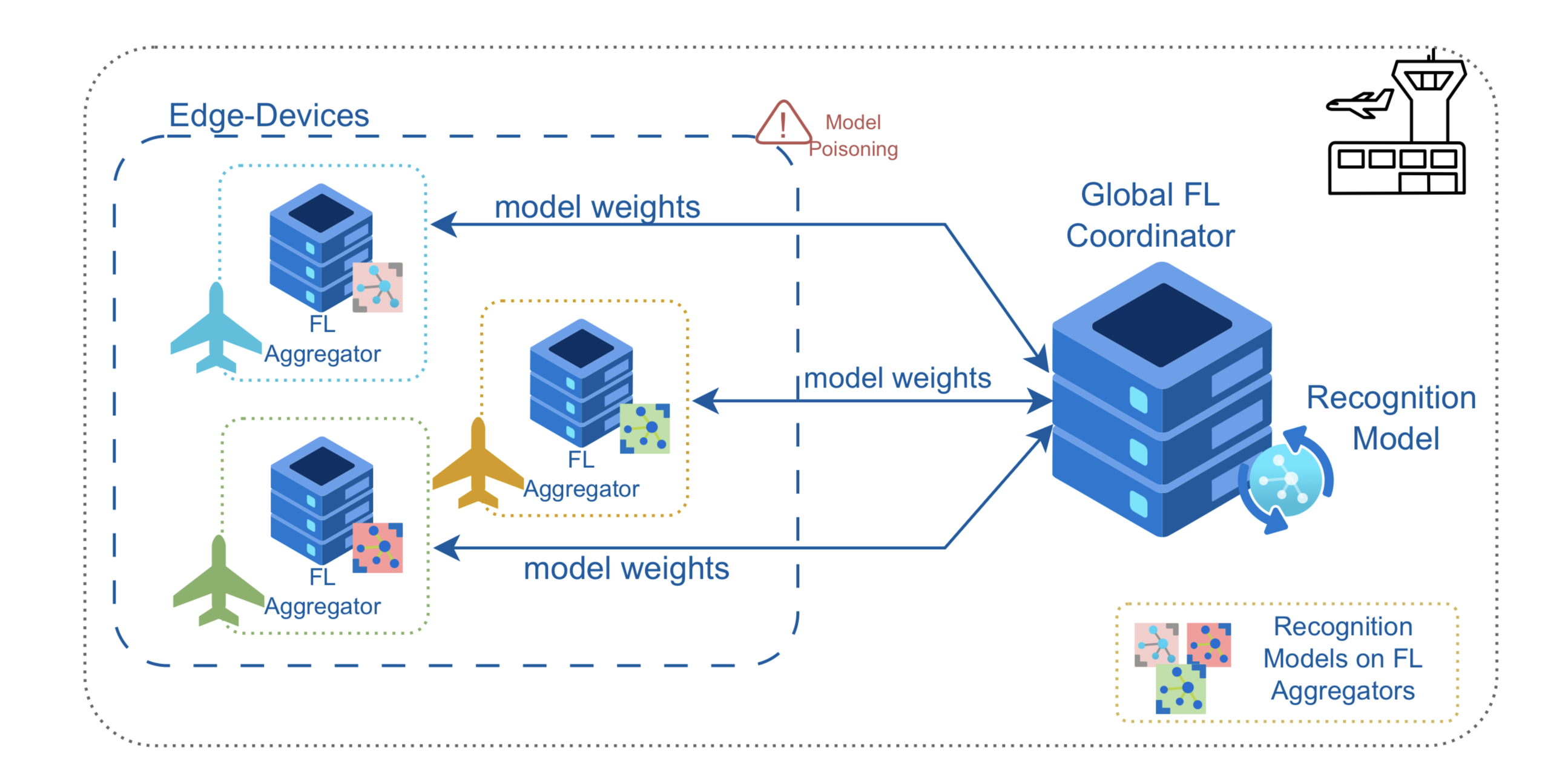Facial Recognition, Privacy, and Airports: Our Take on a Federated Approach
Published:
The rapid adoption of facial recognition in airports raises new questions about privacy, data protection, and scalable AI. In our latest research, we propose a multi-level federated learning architecture that improves security and preserves passenger privacy without sacrificing performance.

1. Why Talk About Biometrics and Privacy at Airports Today?
Airports are rapidly evolving into hyper-automated environments.
From self-service check-in kiosks to biometric boarding gates, facial recognition systems are becoming a central element of passenger processing.
These technologies promise convenience, speed, and improved security — but they also raise pressing concerns about privacy, data control, and surveillance.
When your face becomes your passport, how is your data stored, processed, and protected?
Can we trust these systems not only to recognize us — but also to respect our rights?
Artificial intelligence (AI) and machine learning play a dual role here.
They power the recognition systems that drive automation, but they also open up new ways to rethink how sensitive data is managed — especially through Federated Learning (FL), which allows AI models to be trained collaboratively without centralizing personal data.
2. A Federated Architecture to Protect Biometric Data
Our recent study, published in Future Generation Computer Systems, explores how a multi-level federated learning architecture can safeguard biometric data in airport environments.
Federated Learning shifts the model training process from a central server to distributed devices.
Instead of sending raw data to a central authority, each device (or node) trains a local model and shares only model updates. This approach preserves data locality and significantly reduces exposure.
But what happens when multiple organizations — airlines, airport authorities, and government entities — are involved?
That’s where our architecture comes in.
We designed a three-tiered system tailored to the airport context:
- Client Level: Check-in kiosks capture and preprocess biometric data locally.
- Edge Level: Airline servers act as local aggregators, combining updates from their own kiosks.
- Global Level: An airport-wide coordinator aggregates models across airlines without ever accessing raw data.
This structure supports organizational autonomy, compliance with data protection laws, and scalability — all critical for real-world deployments.

3. Privacy by Design: Techniques We Adopted
From the beginning, our goal was to embed privacy directly into the architecture — not to patch it afterward.
This embodies the privacy by design principle.
To achieve this, we combined complementary privacy-enhancing techniques:
- Differential Privacy (DP): Adds mathematical noise to model updates, making it difficult to reverse-engineer original data — even if the model is compromised.
- Secure Aggregation (SA): Ensures that individual updates cannot be accessed by the server, not even during training.
- Privacy Meter: An open-source tool that audits privacy using membership inference attacks (MIA), simulating how an adversary might guess if someone’s data was part of training.
- Data Protection Impact Assessment (DPIA): A GDPR-aligned framework for evaluating privacy risks and mitigation strategies.
Together, these tools provide both quantitative and qualitative insights into the system’s privacy guarantees.
4. What We Discovered
Our experimental evaluation compared three configurations:
- Centralized Training: Highest accuracy but strong vulnerability to inference attacks.
- One-Level FL: Improved privacy, but organizational bottlenecks limited scalability.
- Two-Level FL with DP and SA: Slight accuracy drop, but significantly higher robustness and privacy protection.
The Privacy Meter results confirmed that privacy-preserving mechanisms substantially reduced the risk of data leakage — even under simulated attacks.
The trade-off between accuracy and privacy proved manageable, especially considering the sensitive nature of biometric systems.
This research contributes to the broader conversation on trustworthy AI — how to design systems that are both powerful and privacy-respecting.
For stakeholders such as airport operators, data protection officers, and public institutions, our architecture offers view about:
- Aligns with GDPR principles (data minimization, security by design);
- Supports decentralized governance across multiple organizations;
- Is adaptable to other sensitive domains such as healthcare and smart cities.
As airports and public infrastructures continue to adopt AI-driven automation, our work shows that privacy and performance do not have to be mutually exclusive.
Future developments will explore:
- Formal verification of security properties,
- Real-world deployment pilots, and
- Integration with advanced cryptographic protocols.
Read the full open-access paper here
cite it:
Campanile, L., de Biase, M. S., & Marulli, F. (2026). Design and evaluation of a privacy-preserving multi-level federated learning architecture for airport biometric check-in. Future Generation Computer Systems, 176, 108217. https://doi.org/https://doi.org/10.1016/j.future.2025.108217
Published in Future Generation Computer Systems, Elsevier (2026)
Authors: Lelio Campanile, Maria Stella De Biase, Fiammetta Marulli
Department of Mathematics and Physics, Università della Campania “L. Vanvitelli”
